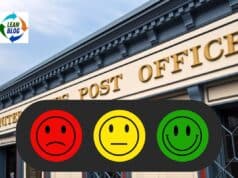American hospitals are concerned (understatement!) about their future revenues as healthcare reform gets implemented. I heard one senior executive tell his staff, “We are never going to be paid more for the work that we do than we are today.” There are going to be immense price pressures on healthcare providers (yet, this squeezing by the payers is not the same as reducing real costs).
So, hospitals need to reduce cost. But can we get there using better methods than traditional “cost cutting.” The Lean methodology leads to lower cost, but as an end result of doing all the other right things – improving quality and service to patients, improving safety, and creating a better workplace through better processes and systems. I was recently quoted on this in an article from H&HN: “What Can Lean Do for You?“
From their article:
It's important to note that cost containment is not the primary focus of Lean, says Mark Graban, president of Constancy Inc., a Keller, Texas. Graban is an author and expert on applying Lean. He wrote a great column on how hospitals can deploy Lean in the August 9 edition of H&HN Daily.
“Cost reductions are the end result to improvements in quality and patient flow and reducing waste from the process. Lean is not about cost cutting,” he told me recently. “To properly engage people in performance improvement, cost reduction can't be the primary driver. People working in hospitals are more prone to talking about improving quality and improving care. That's what gets people excited.”
In hospitals where Lean has been the most successful, Graban says, it has been engrained in the culture.
Lean is the story of “obliquity” — we can get greater cost reduction by not focusing primarily on cost reduction. That's hard to get your head around until you see it in practice. Traditional cost cutting often results in worse service and worse quality (and it usually harms morale, which leads to worse service). Lean allows us to “have it all” — it's a “no tradeoffs” system, if you will.
There's a similar dynamic in Healthcare Kaizen. We don't focus on “ROI” with our daily continuous improvement and we don't try to measure the ROI for each little improvement. That takes too much time and distracts us from other improvements. But, we should expect to see the impact of the Kaizens flow through to the bottom line on the whole. It's important to measure the impact of Lean, as Denver Health does:
Since 2006, for instance, Denver Health has saved more than $87 million thanks to Lean activities. The hospital did so, by the way, adding four new buildings to its campus.
Please scroll down (or click) to post a comment. Connect with me on LinkedIn.
Let’s build a culture of continuous improvement and psychological safety—together. If you're a leader aiming for lasting change (not just more projects), I help organizations:
- Engage people at all levels in sustainable improvement
- Shift from fear of mistakes to learning from them
- Apply Lean thinking in practical, people-centered ways
Interested in coaching or a keynote talk? Let’s talk.
Join me for a Lean Healthcare Accelerator Trip to Japan! Learn More










I would say it as “relative costs” go down. If you’re growing, your costs might be going up, but just at a much slower pace than sales or value. It might be a small distinction and seem trivial, but too often I see organizations focus on absolute metrics instead of relative metrics. Tom Johnson wrote about this quite a bit in Profit Beyond Measure. Ratios and percentages tell you more about how the system is working, which is what allows us to take the proper corrective actions.
Great point, Jamie. I was thinking in terms of “cost per [patient] case” but didn’t say that explicitly.